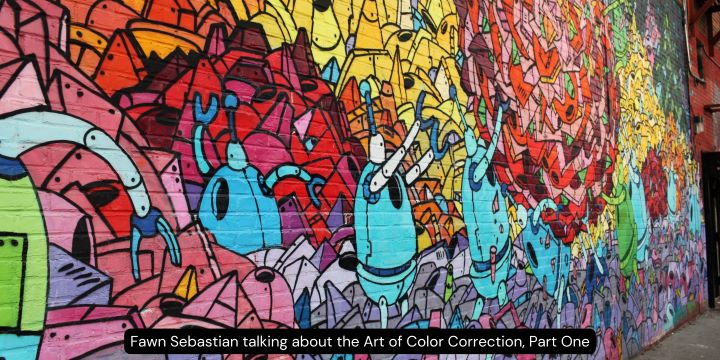Color correction is a vital aspect of filmmaking and photography, transforming raw footage into a visual masterpiece. Fawn Sebastian, a renowned colorist, has mastered this intricate art, elevating the work of countless filmmakers. In this first part of our exploration into her techniques, we delve into Sebastian’s approach to color correction and the foundational principles she employs.
Understanding the Basics of Color Correction
Color correction is more than just adjusting hues and contrasts; it is about enhancing the emotional impact of a scene. Fawn Sebastian begins with a thorough analysis of the footage, identifying the natural light and color present in the raw material. Her goal is to maintain the integrity of the original footage while subtly enhancing its visual appeal. This process involves balancing the colors to achieve a natural look and ensuring consistency across all shots.
The Role of Color Grading in Storytelling
Sebastian emphasizes that color grading is crucial for storytelling. By manipulating colors, a colorist can influence the audience’s emotions and perceptions. For instance, cooler tones might be used to convey a somber mood, while warmer tones can evoke feelings of happiness and comfort. Sebastian’s expertise allows her to seamlessly integrate these elements into the narrative, making the story more compelling.
Technical Aspects of Color Correction
Fawn Sebastian’s method involves a combination of technical skills and artistic intuition. She utilizes advanced software like DaVinci Resolve, which offers a comprehensive suite of tools for color correction. Her process typically starts with primary color correction, where she adjusts the overall color balance, exposure, and contrast. This is followed by secondary color correction, where specific colors or areas within the frame are refined.
Primary Color Correction Techniques
Primary color correction is about setting the foundation. Sebastian begins by correcting any color casts that may have occurred during filming. This involves adjusting the white balance to ensure that whites appear truly white and that other colors are accurate. Exposure correction is another critical step, ensuring that the footage is neither too dark nor too light. Contrast adjustments help to define the visual depth and dimension of the scene.
Secondary Color Correction Techniques
Secondary color correction allows for more precise adjustments. Sebastian might use masks and tracking tools to isolate and enhance particular elements within a frame. For example, she could enhance the color of a protagonist’s outfit to make it stand out or desaturate the background to draw attention to the foreground action. This meticulous attention to detail helps create a visually cohesive and engaging final product.
Achieving Consistency Across Scenes
One of the challenges in color correction is ensuring consistency throughout the entire project. Fawn Sebastian tackles this by creating a color palette for the film or project. This palette serves as a reference, ensuring that the visual tone remains consistent even as scenes change. She also uses techniques like shot matching, where the colorist ensures that consecutive shots have similar color properties, maintaining a seamless flow.
The Creative Collaboration
Color correction is a collaborative process. Fawn Sebastian often works closely with directors and cinematographers to understand their vision and preferences. This collaboration ensures that the final product aligns with the creative intent of the filmmakers. Sebastian’s ability to interpret and enhance this vision is a testament to her skill and experience in the field.
Conclusion
In the intricate world of color correction, Fawn Sebastian stands out as a master of her craft. Her ability to blend technical precision with creative intuition has made her a sought-after colorist in the industry. As we continue to explore her techniques in the next part of this series, we will delve deeper into her advanced methods and case studies of her work. Stay tuned for more insights into the art of color correction from one of the industry’s leading experts.



